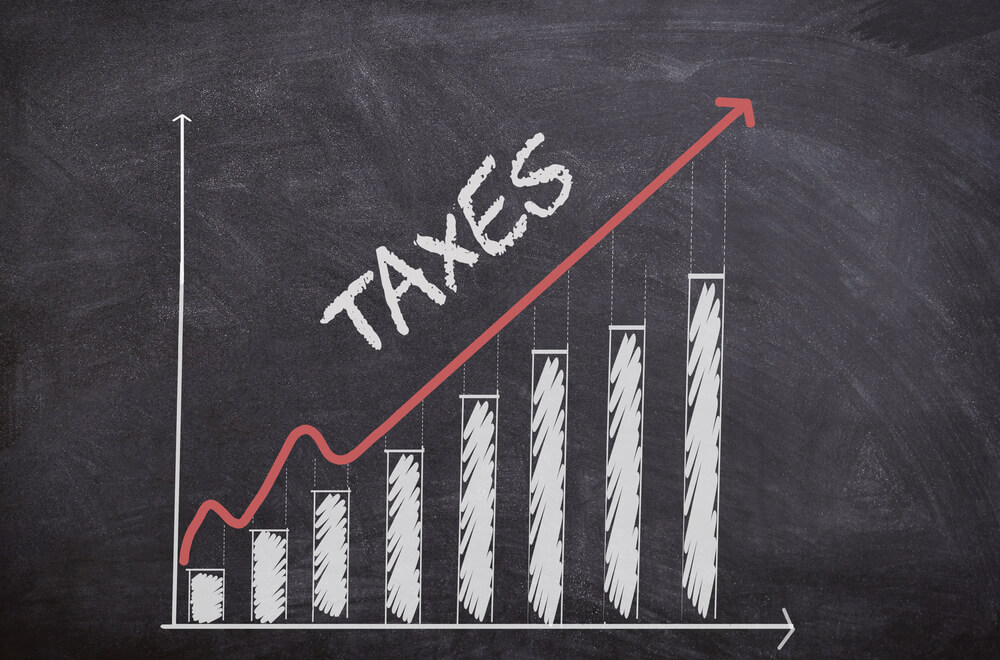No matter how you crunch the numbers, New Jersey has the highest property tax bills in the nation.
Feeding into that tax bill are 21 counties, 564 municipalities, more than 600 school districts and an assortment of other small taxing entities like fire districts and independent municipal libraries.
Part of the reason for this heavy reliance on property taxes comes from the state’s tradition of home rule, where local entities made their own decisions and paid for them with their own funds. For a long time New Jersey was a state without much other taxation except excise taxes.
Then in 1966 the state reinstated a sales tax after a brief experiment with one in 1935 that was quickly repealed. It started out at 3% and evolved to the present 6.625%. Some common items like cigarettes and gasoline are free of the sales tax but subject to their own excise taxes.
———————
Government must stop treating taxpayers like we have a money tree in the backyard.
———————
A decade later came the income tax, a reaction to the court ruling in Robinson v. Cahill, the New Jersey Supreme Court case that invalidated the state’s school finance statutes and did so on the basis of the state Constitution’s obligation for schools to provide a “thorough and efficient” education.
The Garden State continued throughout the establishment of both sales and income taxes to hold onto the dubious title of the highest property-taxed state in the union.
In 2007 Gov. Jon Corzine signed a property tax cap limiting annual growth in the local tax levy to 4% but also allowing 14 spending exceptions to the cap. In 2010, Gov. Chris Christie signed a more stringent property tax cap law, but property taxes remained the highest in the country.
The myth here is that there is a hard 2% cap on annual increases in the tax levy for municipalities.
Not so.
While the 2010 law signed by Christie did eliminate some of the exemptions from the cap calculation that were present in the Corzine bill, a number of them remained.
When calculating the limit imposed by the state tax levy cap, municipalities can omit the cost of debt service, shared services, pension and health benefits, construction and emergencies, among others.
That “hard” cap that Christie spoke of can get pretty flexible. It is entirely possible for the tax levy to rise 5%, 7%, 10% or more and still be perfectly in line with the 2% cap that was supposed to protect the taxpayer.
Now under Governor Murphy, the cap has been made even less meaningful for school districts, which will be allowed to increase the tax levy to account for losses in state aid, and those increases can go as high as 9.9% for districts dealing with cuts in state funding, as most of the school districts in Cape May County are.
The state can pass along spikes in health benefit costs and required pension payments to municipalities knowing that the towns can include these charges in their property tax levies without violating the state’s cap on property tax increases.
The state can also now pass along the cost of providing a thorough and efficient education to districts where state funds are being significantly cut. If municipalities can raise their tax levies 7% or 10% and still meet the limitations of the so-called cap law, there is a problem. If school districts losing millions in state aid can now raise their tax levies up to 9.9% and still be fine with the tax cap, we definitely have a problem.
State data says that more than $32 billion was collected in local property taxes for use by counties, municipalities and school districts. In Cape May County in 2024 the combined budgeted local purpose tax levies for all 16 municipalities is $262 million. The county levy is set at $165 million. The county’s school district tax levies total $175 million.
That amounts to more than $600 million for a single year, and it was a year in which the property tax cap limits on school districts were weakened further for the next cycle of budgets.
It is time to take a hard, consolidated look at real cap reform. What is needed is a hard cap that protects taxpayers. It is time to constrict the growth of property taxes in ways that force behavioral changes – school consolidations and/or other educational options, more shared services, changes to employment policies that bloat taxes.
Just our county government alone has an accumulated absence liability, payments banked by employees who do not use vacation or sick days and expect checks when they leave, of more than $7.5 million. What private employer could afford such a luxury for its employees and stay in business?
The county and its municipalities can do it because the taxpayer’s wallet is wide open to them. They do not have to convince us to buy their product. They simply take the money.
The list could go on, but there is a common denominator. As long as no effective cap exists limiting spending and tax increases, nothing will change. The current cap law is ludicrous and made more so by the law signed this year “allowing” property taxes to take up the slack for declining state education aid.
As long as the state, the counties, the municipalities and the school districts can tax, they will tax. The hard decisions will be avoided. We have to demand cap reform and hold accountable those in Trenton who do not listen.
If our personal budgets are hit with extraordinary expenses, we must cut elsewhere; government must stop treating taxpayers like we have a money tree in the backyard.
Quotes from the Bible
“Love does no harm to a neighbor. Therefore love is the fulfillment of the law.” Romans 13:10







